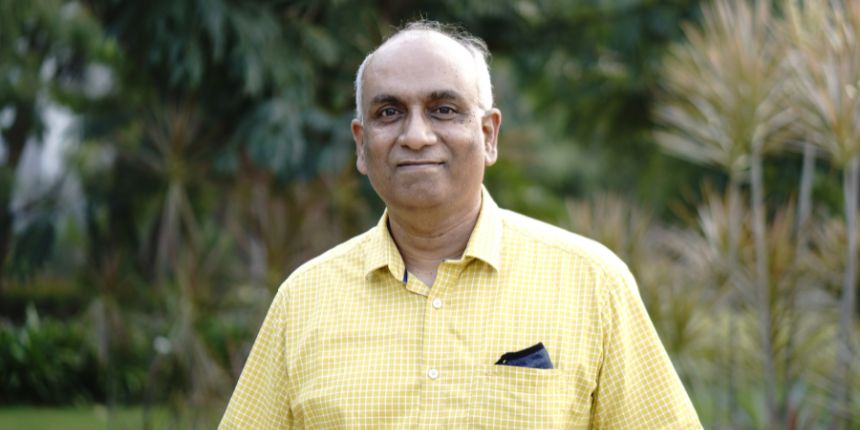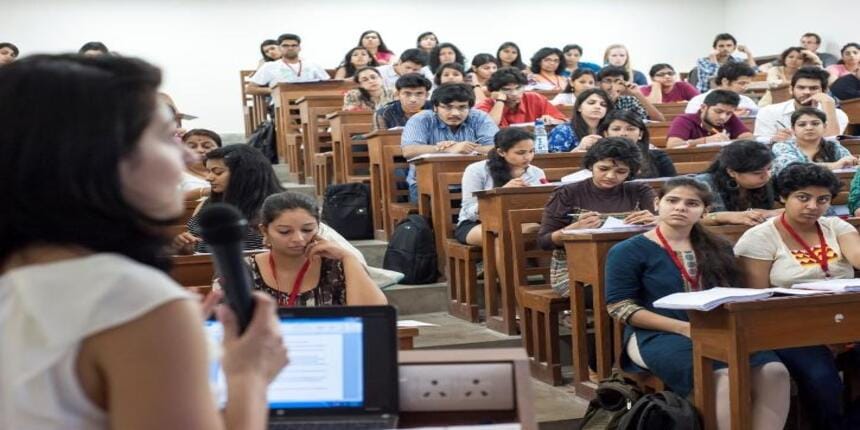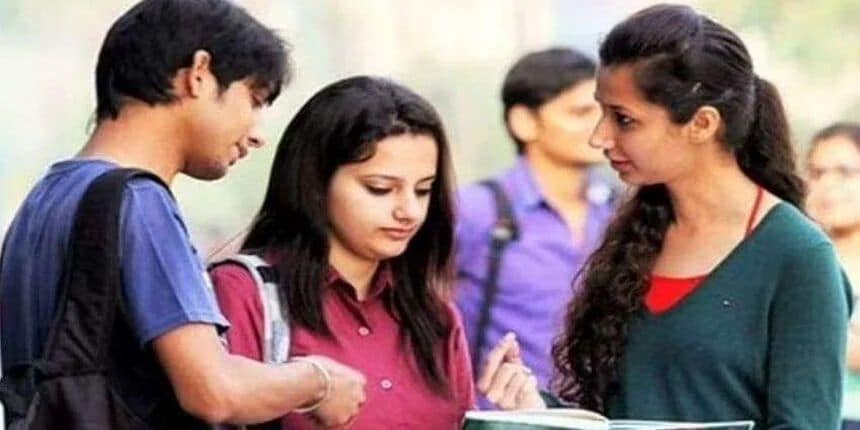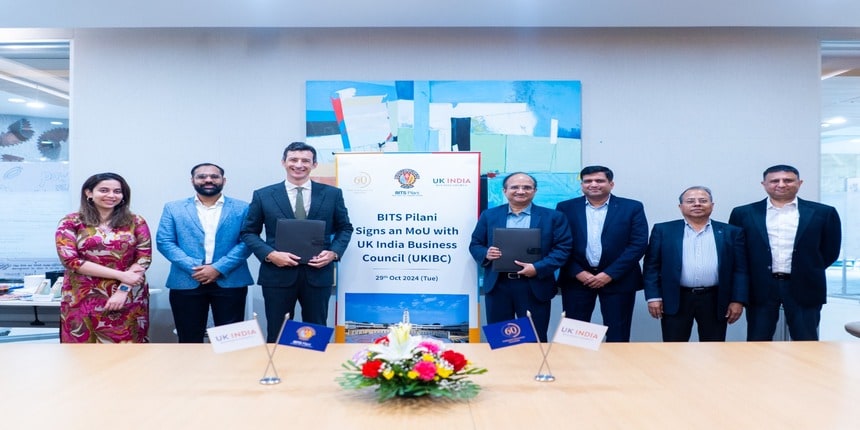Liberal Arts: ‘Our curriculum is forward looking,’ says Krea University dean
Krea University’s School of Interwoven Arts and Sciences dean on liberal arts education, credit system, adopting FYUP.

Sanjay | June 27, 2024 | 10:53 AM IST
NEW DELHI: Krea University, Sri City, started with 120 undergraduate students in 2019. Its School of Interwoven Arts and Sciences (SIAS) admitted 270 students in its BA, BSc, and Honours programmes last year. This year, it’s planning for 320. SIAS is also implementing the four-year undergraduate programme (FYUP) from 2024-25. Prithvi Datta Chandra Shobhi, dean, SIAS, spoke to Careers360 about admission, importance of liberal studies education, credit system, plans for future and more. Edited excerpts
Q. How does Krea University admit students?
A. We conduct four rounds of admissions in a year – in November, January, March and June.
We have a separate comprehensive application form in which students provide information about their academic and non-academic pursuits and current extracurricular activities. Students provide information on who they are, what transformed them and why they want to pursue a course in Krea and how they visualise a life or career for themselves. This is followed by an essay. We rely on this information to assess what will be their attitude towards learning.
There is an interview too. Through interviews, we are able to evaluate the nature of students, their accomplishments and make out how they will do once they come to Krea.
Based on their application and interview score, we admit students.
Also read Virtual Liberal Arts and Sciences Expo for Class 12 graduates on July 6, 7
Q. Are you following the FYUP structure? Did you have a choice-based credit system before this?
A. We are following the FYUP. We are compliant with the University Grants Commission’s (UGC) guidelines on credit structure, double majors, among others.
The CBCS is a very limited way of thinking about interdisciplinarity. Under CBCS, students who are studying one discipline typically get to take one or two other courses and other disciplines. What we do at Krea goes much beyond CBCS. We have a very open structure as part of which students can take any course which is offered.
Unlike other universities, we follow a trimester model. We have a 12-week semester as opposed to 15 weeks. But we offer the same number of hours per credit. In these three semesters, students are offered about 400 to 450 courses in a year in different disciplines. In theory, any student can take any course regardless of their major. There is no restriction as long as the timetables don’t clash.
Q. How does the credit system work at Krea?
A. At Krea, 36 to 40 credits come from general education courses, what we call core and skills courses. In the first year, all students have a common curriculum in which students study about 11 courses and complete at least 10. They acquire 36 credits.
Students pick their majors from the third term onwards. But they declare their major only in the middle of the second year, in the fifth semester, which gives them a little bit of time to work out which subjects they're interested in.
Q. Are all combinations of majors and minors allowed?
A. We don't have any restrictions on major-minor combinations or a double-major combination that students can take. For example, if a student wants to study politics and chemistry as a double-major, that is fine with us. They can study economics and mathematics or economics and psychology or any other double-major combination.
Also read AI, design, field work: How summer schools are introducing children to liberal arts, universities
Q. How do you ensure values of liberal arts education in your courses?
A. All our students study general education programmes or the skill courses. These basically feature small guides on how to think, how knowledge is produced, or knowledge is transmitted. They teach scientific reasoning, mathematical reasoning, and how we think about history and society.
We actually think about disciplines as they exist today and where they might be in 20 years. We also look at connections that exist and new connections that are emerging between disciplines. Our curriculum is always forward looking. Our curriculum is also considered in relation to each other's disciplines.
For example, we have always thought about politics and history as companion subjects but, we don't necessarily see history and biology as connected. Today, some of the most interesting research insights are coming from techniques that are used by biologists. Ancient DNA analysis, for example, has become very important for answering historical questions.
Q. Liberal arts universities, most private, are seen as elite spaces.
A. Unfortunately there is some merit in the statement that liberal arts are mainly studied at private universities by affluent students.
Liberal arts typically is an approach that is followed in American universities. That model has been indigenised and adapted to the Indian context by some elite private universities. That is true. And some of us who have studied both in India and in the US and taught in the liberal arts programme, have worked closely on it to make sure that it works in the Indian context as well.
By studying liberal arts, you get a very thorough training in a particular discipline, become good thinkers, understand what's going on in the world and intervene in ways that make the world a better place.
Liberal arts is still a niche. In the American context, this is well understood and has become mainstream. In India it will take a few more years.
None of the private universities are being subsidised by the government. Someone has to pay for it. And unfortunately, in this case, it’s either corporate CSR funds or parents who can afford these things.
Q. How do you ensure diversity of students in your classrooms?
A. One of our goals is an incoming class that reflects the diversity of India. Students don’t just learn from books but from each other by meeting people of different backgrounds to get a much richer, nuanced understanding of Indian society.
We are working towards this goal by two means: funding and outreach programmes. We hold an extensive outreach programme, which spreads the word about Krea across India. Students who are from underprivileged backgrounds, get full funding, including some small scholarships to cover living expenses. We try to fund about 10% of our entire student body with a full scholarship. That depends on the quantum of funding available for every year. Additionally, there are other students who get partial funding.
Q. How have the placements been?
A. Our first batch graduated in May 2022 and immediately after we started a postgraduate diploma programme. About 40% of our first-batch graduates remained with Krea to complete their postgraduate diploma.
Another 30-35% were placed in different reputed companies. Since our first batch, we have had a very good track record in sending students to master's and PhD programmes with full funding.
Q. Are there any interesting research projects being done by your students or faculty?
A. There are lots of research projects that students are doing in collaboration with faculty. Although we are a young university, our research papers are in the pipeline for publication. We are in the process of setting up the research laboratories.
At any given point of time, we have 25 to 30 students who are functioning as research assistants. These are paid positions.
Also read ‘We developed core courses around grand challenges’: Ahmedabad University VC
Q. How is Krea different from other liberal arts universities?
A. Our approach is distinctive and it is encapsulated in interwoven learning. There are eight guiding principles that we use in order to define what interwoven pedagogy or learning is.
These are writing intensive, interdisciplinary, research-based, focus on ethics and the historicity of different ideas, immersive experiences, data analytics and raising questions. These capture our approach to curriculum-making, teaching and assessment.
Follow us for the latest education news on colleges and universities, admission, courses, exams, research, education policies, study abroad and more..
To get in touch, write to us at news@careers360.com.
Next Story
]Study Abroad: New Zealand rejects 40% of Indian student visas, leaves universities jittery
While New Zealand rejected 2,010 student visa applications from India, only 206 from that of China were rejected within January-April 2024, says an RNZ report; universities blame visa processing delays, lack of training among immigration officials for rejections
Pritha Roy Choudhury



